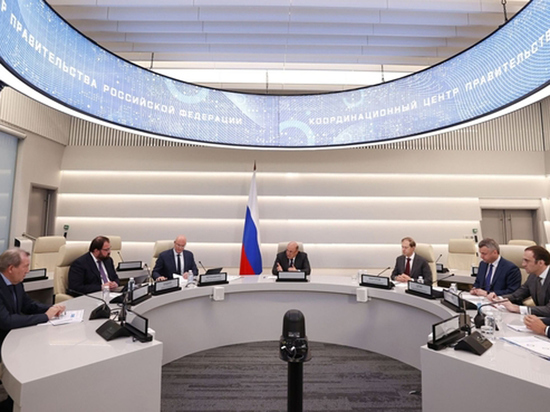At a meeting with Mishustin on microelectronics, they talked about non-volatile memory
[ad_1]

Director of NIIME, Academician of the Russian Academy of Sciences Gennady Krasnikov shared information on the development of new generation microprocessors
Fifty new laboratories and 25 training design centers will appear in Russia in the coming years as part of the program for the development of domestic electronic engineering and microelectronic components. This was announced on Tuesday evening by Prime Minister Mikhail Mishustin at a technological session on microelectronics.
Among others, Deputy Prime Minister, Minister of Industry and Trade Denis Manturov, Deputy Prime Minister Dmitry Chernyshenko and Academician-Secretary of the Department of Nanotechnology and Information Technology of the Russian Academy of Sciences Gennady Krasnikov took part in it.
Mikhail Mishustin called electronics the most important activity for strengthening the country’s technological sovereignty. For its development, according to the Prime Minister, the industry will receive unprecedented funding for eight years. And the process will be directed in the right direction by scientists, who are required to actively participate in the development and implementation of the most advanced industrial products. Despite the fact that many scientific centers in our country already have a certain reserve, the number of scientific laboratories will be increased by 50, and 25 design training centers will appear to train personnel.
Gennady Krasnikov, head of the industry’s leading Research Institute of Molecular Electronics, spoke about a number of important areas that now require special attention. In particular, in addition to the revival of domestic electronic engineering, the development of new technological processes, scientists are faced with the problem of obtaining ultra-pure materials, their delivery, and methods for measuring their purity.
Gennady Yakovlevich also touched upon the promising results already obtained, breakthrough technologies that can compete with Western ones in the modern market. In particular, these are new types of memory that are in demand today for neuromorphic computing, new materials, for example, gallium nitride on silicon, a very interesting 3D direction for creating so-called interposers. An interposer is a silicon chip that can combine many more elements from various materials into itself than a conventional printed circuit board made of fiberglass. With the help of such an interposer, for example, it will be possible to make computers smaller and with more computing power.
The MK correspondent phoned Krasnikov to ask in more detail about new technologies, as well as about who will be involved in their development.
– Gennady Yakovlevich, what is the complex of the country’s electronic industry today?
– The geography here is wide. Of course, first of all, Zelenograd should be noted with its Research Institute of Molecular Electronics and numerous factories. The Research Institute of Precision Engineering, Research Institute of Materials Science, MIET and its technopark are also located here. There are many enterprises in Chernogolovka near Moscow, in St. Petersburg, in Voronezh, in Nizhny Novgorod, in Novosibirsk and other regions of Russia. In addition, Belarusian enterprises are also included in our broad cooperation.
– You mentioned new types of memory. Tell me more, what is it?
– Memory is a very important area, which is now recognized as a bottleneck in the field of microprocessor development. Judge for yourself – today in them 1 bit of memory is implemented by 6 transistors, which occupy 40% (!) Of the area of the entire microprocessor. In addition, this configuration is too energy intensive. Now all scientists of the world are working to make the memory non-volatile and more miniature. This, in turn, will allow us to change the architecture of the microprocessor, bringing it closer to the architecture of the neural networks of our brain.
– How can the energy independence of new types of memory be ensured?
– Here is a very interesting physics on the models of conductivity in new materials that are used to create non-volatile memory. The main tasks are to achieve compactness, high speed of rewriting and reading, to increase the number of rewriting cycles up to several billion. And all this must be ensured over a wide range of operating temperatures. We see a big plus in the fact that the program to support the development of domestic electronics is designed for a long-term period. This will attract a lot of highly qualified specialists to it.
[ad_2]
Source link








